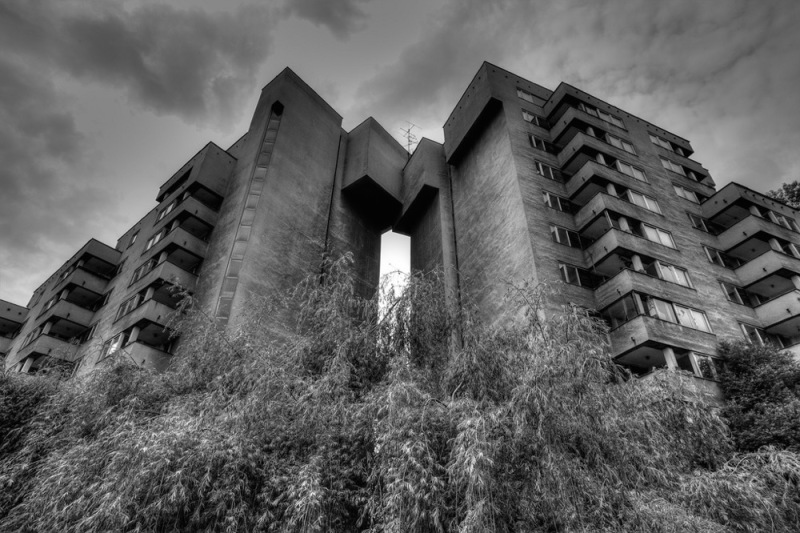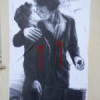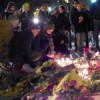
An example of Soviet-era architecture in Warsaw. Original photo courtesy of Martin, Flickr creative commons.
The following story originally appeared on Link TV’s Global Post Blog in 2009 during my stint as the station’s series blogger.
I am remembering a talk I had with Danuta Pawlowska, the Polish grandmother of a good friend of mine, in her Warsaw apartment several years ago. A member of the Warsaw resistance during the Nazi occupation, Danuta was closely monitored after the communists took over in the mid-1940s.
She recalled a long gossip-filled phone conversation with a close friend. Two hours into the conversation, a booming male voice suddenly burst through the receiver. “Would you just shut up already?” the man groaned. “How much more of this must I listen to?!”
I had laughed at the time. For a young American with roots in Warsaw, the idea of a government agent listening to a banal chat with a friend was amusing – something fit for a dime store spy thriller.
This disconnect is also apparent in present-day Warsaw. In the city’s meticulously reconstructed Old Town, foreign tourists swarm on souvenir shops to purchase T-shirts and shot glasses, and bursts of bad American pop music filter out of the same fashion chain stores that line Paris’ Rue de Rennes or Copenhagen’s Strøget. The stylish, boisterous students crowding the bars and cafes have no memory of life in pre-1989 Warsaw.
Yet, if you venture outside of the city center, the medieval architecture gives way to monotonous tenements the color of diesel exhaust. Passing by some of these buildings at dusk is an unnerving, somewhat melancholy experience, and I’ll admit that I glanced over my shoulder more than once. For Danuta and millions of others, that reality was life.
I was also a child when the Berlin Wall came down. I remember the now-iconic images of jubilant Berliners rushing the wall with pickaxes, but I was too young to grasp the larger significance of the event and what it meant to Germany, Europe and the world.
I would like to say that I left Poland with a greater understanding of what day-to-day life must have been like for Europeans, such as Danuta, who had lived under the Soviet regime. Like Warsaw’s younger generation, however, there is only so deep that second-hand knowledge can resonate. The generation gap between young and old in Poland has resulted in a new type of barrier between those who remember and those who came of age in a different time.
In the flood of anniversary coverage this week, the most telling, perhaps, is a BBC special report. Amidst the frenzy of anniversary festivities, Walls Around the World is a sobering reminder of those barriers–from North Korea to Botswana–that have yet to topple.
I think of Danuta and of the magnitude of what she witnessed. I wonder which other walls will come down over the course of my lifetime.





2 Comments
Hi Erin…
Danuta Pawlowska is my Aunt. Is it possible to
see or read your entire interview w/Cochu? I would be so grateful…
Hi, Rose Marie and thanks for stopping by. It was less a formal interview than a series of conversations at her kitchen table. I did take notes, though. 🙂 I am not sure what your Polish level is, but there is a great interview with her here that discusses her experiences during World War II: http://ahm.1944.pl/Danuta_Pawlowska